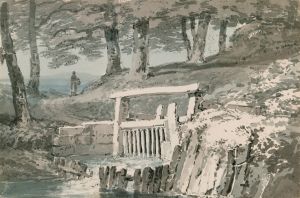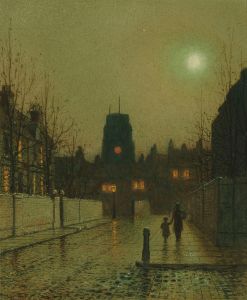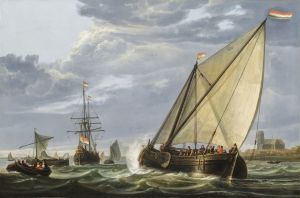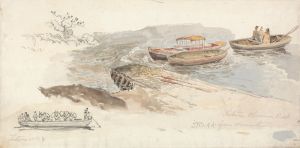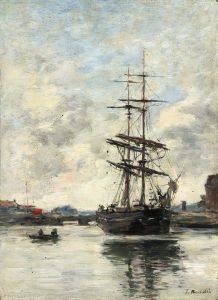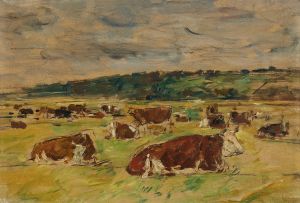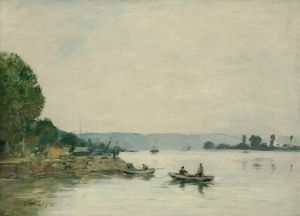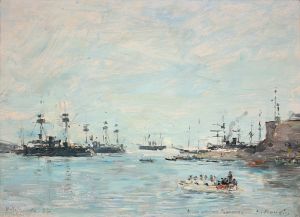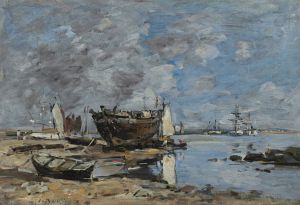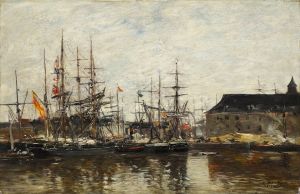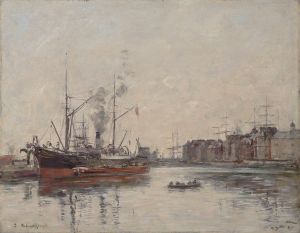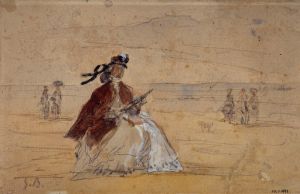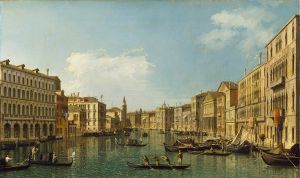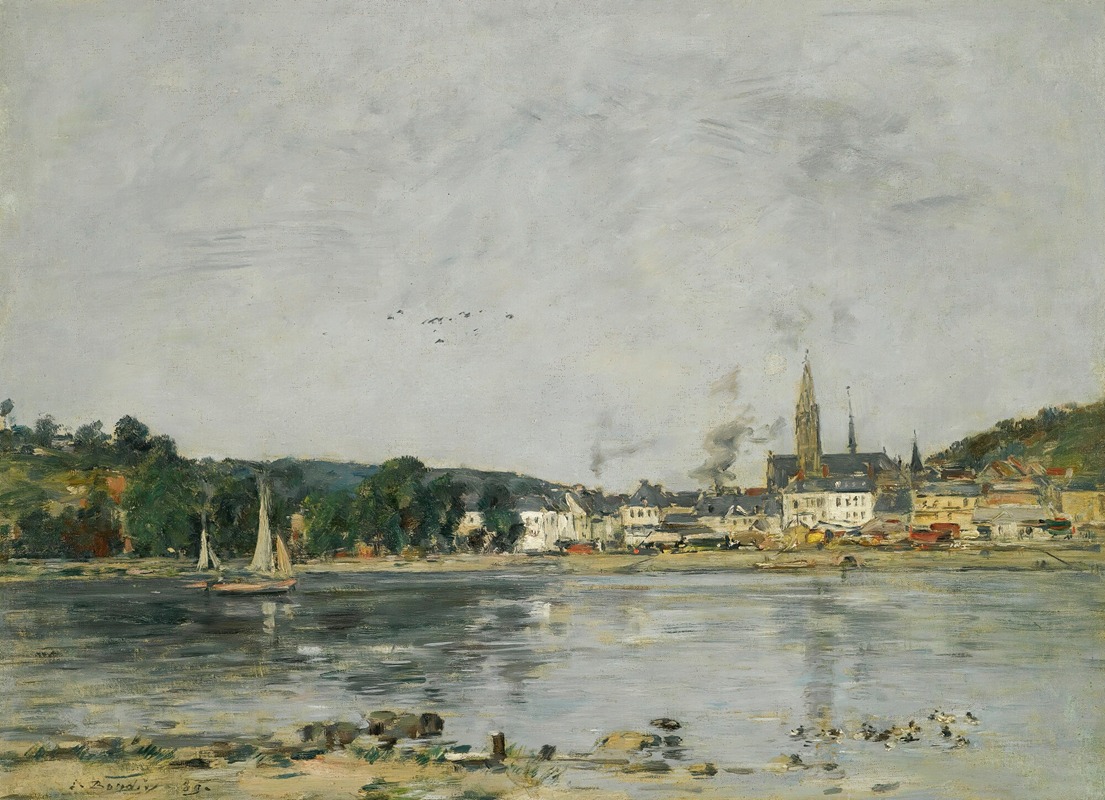
Caudebec-En-Caux, Le Quai De La Seine
A hand-painted replica of Eugène Boudin’s masterpiece Caudebec-En-Caux, Le Quai De La Seine, meticulously crafted by professional artists to capture the true essence of the original. Each piece is created with museum-quality canvas and rare mineral pigments, carefully painted by experienced artists with delicate brushstrokes and rich, layered colors to perfectly recreate the texture of the original artwork. Unlike machine-printed reproductions, this hand-painted version brings the painting to life, infused with the artist’s emotions and skill in every stroke. Whether for personal collection or home decoration, it instantly elevates the artistic atmosphere of any space.
Eugène Boudin's painting Caudebec-En-Caux, Le Quai De La Seine is a work by the renowned French artist, who is widely regarded as one of the precursors of Impressionism. Boudin, born in Honfleur in 1824, was celebrated for his ability to capture the transient effects of light and atmosphere, particularly in coastal and river scenes. This painting depicts a view of the Seine River at Caudebec-en-Caux, a small town in the Normandy region of France.
The artwork showcases Boudin's characteristic style, with a focus on natural light and the interplay between water, sky, and human activity. The scene portrays the quay along the Seine, likely bustling with life, as was typical of the region during the 19th century. Boudin's use of soft, muted tones and loose brushwork reflects his dedication to painting en plein air, a technique that allowed him to observe and render the changing qualities of light and weather directly from nature.
Boudin's works often featured maritime and riverside themes, and Caudebec-En-Caux, Le Quai De La Seine is no exception. The Seine River, a vital waterway in France, was a recurring subject in his oeuvre, providing a dynamic setting for his exploration of atmospheric effects. Caudebec-en-Caux, located in the Seine-Maritime department, was a picturesque town that likely attracted Boudin for its scenic beauty and the activity along its riverbanks.
This painting is an example of Boudin's transition from the more traditional landscape styles of the mid-19th century to the innovative approaches that would later define Impressionism. His emphasis on capturing fleeting moments of light and his focus on everyday scenes influenced many of his contemporaries, including Claude Monet, who once referred to Boudin as his "master."
The exact date of creation for Caudebec-En-Caux, Le Quai De La Seine is not definitively documented, but it is consistent with Boudin's body of work from the 1860s to the 1880s, a period during which he frequently painted scenes along the Seine and the Normandy coast. The painting is held in a private collection or museum, though specific details about its current location or provenance are not widely available.
As with many of Boudin's works, this painting exemplifies his ability to elevate ordinary scenes into poetic compositions, emphasizing the harmony between human activity and the natural world.





